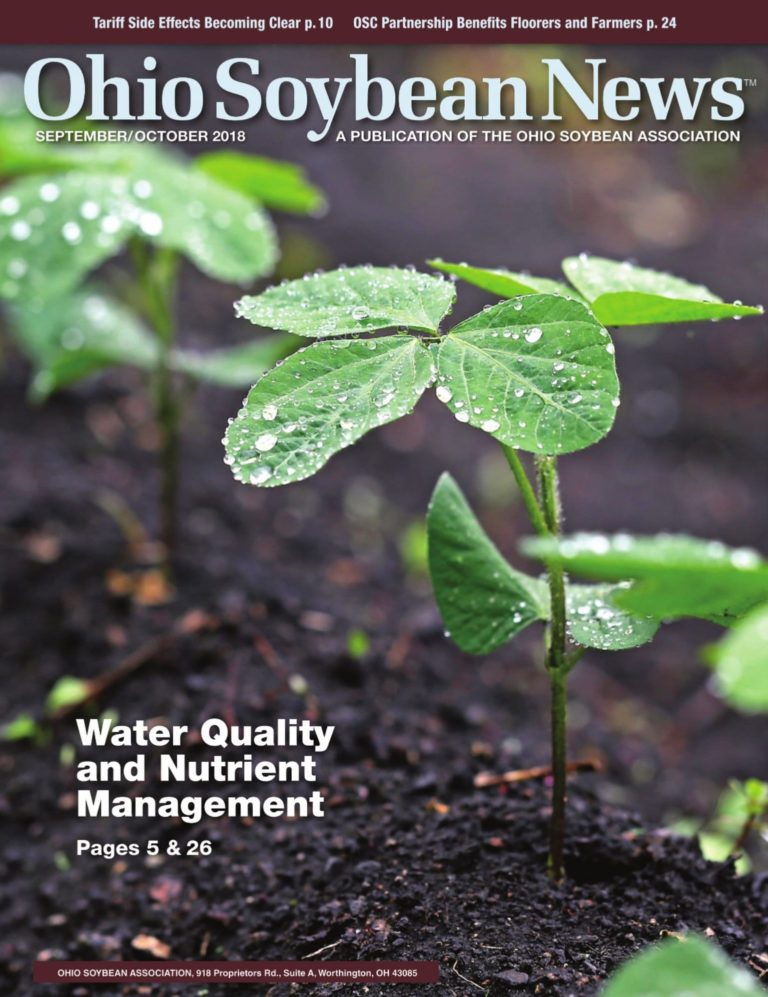Ohio Farmers See Opportunity in High Oleic Soybeans

Ohio Farmers See Opportunity in High Oleic Soybeans
The food industry is soy oil’s biggest user, but since the onset of trans fat labeling, the U.S. soy industry has lost 4 billion pounds of annual edible-oil market share. That’s the oil from 359 million bushels of soybeans – every year. One way to recapture the U.S. market share soy lost to competitors is by growing high oleic soybeans, which could deliver long-term demand for farmers all around the U.S.
High oleic soy oil has no trans fat and less saturated fat than commodity soy oil, giving it the potential to meet evolving customer demands.
High oleic soybean varieties produce oil with increased functionality, which has benefits for food and industrial users and could increase the value of all U.S. soybeans. Recognizing this potential to revolutionize the soy oil industry, the soybean checkoff set a goal of 18-23 million planted acres of high oleic soybeans by 2023. Here’s what some Ohio farmers growing high oleic soybeans have to say about this new, innovative soybean:
“This is our second year growing high oleic soybeans. I had grown identity-preserved soybeans before and I wanted try something new. I also wanted to grow something that benefited end users. Last year, they were on the high end of yields. We had a really rough year and these soybeans were still able to make it and have comparable yields.”
“All the possibilities for this new soybean oil are still being discovered. This will definitely give the soybean industry more legs to stand on and gives us more diversity in the markets we can reach. This will increase our long-term profitability, just knowing about the new processes and products they could come up with for this soybean oil.”
–Bill Bateson Arlington, OH
“We have been really happy with the high oleic soybeans’ yield. Even with drought and tough conditions, they really seem to shine. They have been comparable with our on-farm average, and in some places, were even higher than that.”
“We like to be on the cutting edge of technology. This soybean could bring new markets, and with that comes new opportunity. We just want to keep improving demand and strengthening the market. This is good for our business and good for everyone else’s business.”
–Mark Hoorman Napoleon, OH
“This is our third year growing high oleic soybeans. They’ve yielded as well as the other soybeans around. They fell right in there with the rest of them and were comparable with our on-farm average.”
“This should help the U.S. soybean market get back some of the oil business that we have given up to other vegetable oils. This should be good for farmers, consumers and all of us up and down the line. It should help all of agriculture in the Midwest.”
–Don Massel Naploeon, OH
“I feel that growing these soybeans is moving the industry in the right direction. I am always looking at different avenues and different revenue streams for farmers. This happened to fit into our operation and we decided to go ahead and grow them.”
“It’s hard to get a lot of people to take a chance on something like this. But those of us who have, have seen results. We need more farmers. There are new demand possibilities and we need to show those markets we are ready. Hopefully, other farmers will see the success of these high oleic soybeans, realize that there is potential to grow profits with them and think they are a good fit for their farms too.”
“High oleic soybeans come in good varieties. They are comparable in agronomics to my other varieties and varieties in the area, and they yield just as well too.”
–Jack Leslie Upper Sandusky, OH
